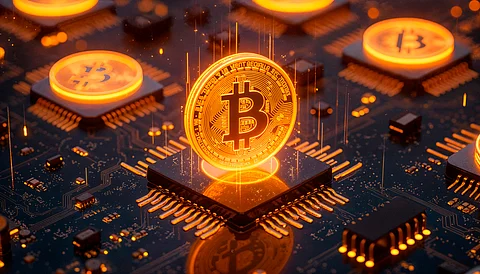

Bitcoin’s energy consumption has been a growing concern for over a decade. The network’s reliance on Proof-of-Work (PoW) — though effective for securing consensus — requires massive computational output and electricity. According to the Cambridge Bitcoin Electricity Consumption Index, Bitcoin’s annual energy usage rivals that of entire countries, raising both environmental and scalability concerns.
As governments push for greener practices and developers explore sustainable models, Bitcoin Solaris introduces a new way forward: a blockchain architecture that reduces mining energy consumption by 99.95%, while still preserving security, decentralization, and network integrity.
Bitcoin mining works by having machines compete to solve complex mathematical problems. This mechanism — Proof-of-Work — is what secures the blockchain, but it comes at a high cost. The more valuable Bitcoin becomes, the more incentive there is to build larger mining operations, consuming more electricity in the process.
These operations are concentrated in areas with cheap power, contributing to geographic centralization. Individual miners are pushed out, and the sustainability of the system becomes harder to defend.
Bitcoin Solaris addresses these challenges through a dual-layer blockchain and the Helios Consensus Mechanism, a hybrid model that eliminates the need for power-intensive computation. Its architecture is both scalable and energy-efficient, using:
Proof of Stake (PoS) to assign validator responsibilities based on stake
Proof of Capacity (PoC) to replace hardware-intensive mining with storage-based validation
Proof of History (PoH) and Proof of Time (PoT) to coordinate fast transaction sequencing and finality
Removing the need for continuous hardware hashing and shifting validation to low-power tasks, the network operates with minimal energy input — delivering the same security guarantees as PoW, at a fraction of the environmental impact.
Bitcoin Solaris achieves this through a dual-layer structure:
The Base Layer is responsible for ledger operations, consensus integrity, and network-wide security.
The Solaris Layer, built on Solana’s high-speed architecture, manages smart contracts, high-volume transactions, and app interactions.
Each layer handles distinct functions, reducing congestion and streamlining resource allocation. This layered approach lets the network scale without bottlenecks, using smart distribution rather than brute-force power.
To see how Bitcoin Solaris achieves such significant energy efficiency while maintaining high throughput, watch this full feature by Crypto Chino.
One of the most significant outcomes of Bitcoin Solaris’s efficient design is the ability to mine from mobile devices. The Nova App, launching soon, allows users to:
Allocate a small portion of storage (1–5 GB)
Run background mining using idle CPU cycles
Earn BTC-S tokens in real time
Monitor performance and interact with the network on-the-go
This process consumes very little energy. It’s accessible from anywhere and doesn’t require special equipment. And because rewards are tied to uptime and contribution, not processing power, it shifts mining back toward inclusivity rather than industrial scale.
Bitcoin Solaris has a fixed total supply of 21 million BTC-S tokens. There are no surprise emissions, no inflation schedules, and no algorithmic burns.
Currently in Presale Phase 2, BTC-S tokens are available at 2 USDT each. Once this phase ends, the price will increase to 3 USDT in Phase 3. Of the total supply, 4.2 million tokens (20%) are allocated for public access during this stage.
For users looking to participate before the app launch and exchange listings, this represents the final low-entry phase. Moreover, Bitcoin Solaris is fully audited and transparent: all smart contracts, consensus logic, and token distributions have passed third-party review:
There are no closed systems, no centralized nodes, and no dependencies on third-party validators.
The energy footprint of traditional mining is no longer sustainable — and users are beginning to demand alternatives. Bitcoin Solaris delivers one: a dual-layer blockchain that keeps networks fast, secure, and decentralized — while cutting energy use by 99.95%.
In a market shifting toward utility, sustainability, and inclusivity, this isn’t just an upgrade. It’s a blueprint for how blockchain should work in 2025.
Website: https://bitcoinsolaris.com/
X: https://x.com/BitcoinSolaris
Telegram: https://t.me/Bitcoinsolaris
Join our WhatsApp Channel to get the latest news, exclusives and videos on WhatsApp
_____________
Disclaimer: Analytics Insight does not provide financial advice or guidance on cryptocurrencies and stocks. Also note that the cryptocurrencies mentioned/listed on the website could potentially be scams, i.e. designed to induce you to invest financial resources that may be lost forever and not be recoverable once investments are made. This article is provided for informational purposes and does not constitute investment advice. You are responsible for conducting your own research (DYOR) before making any investments. Read more about the financial risks involved here.
